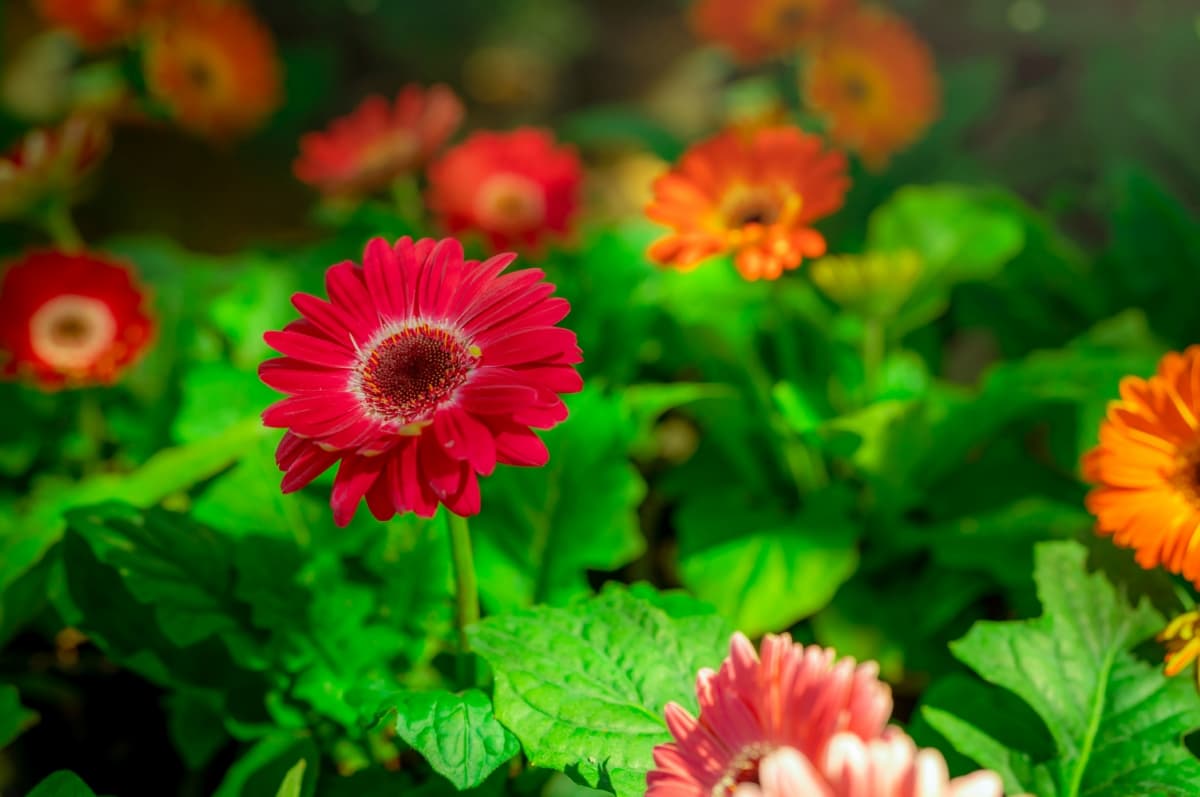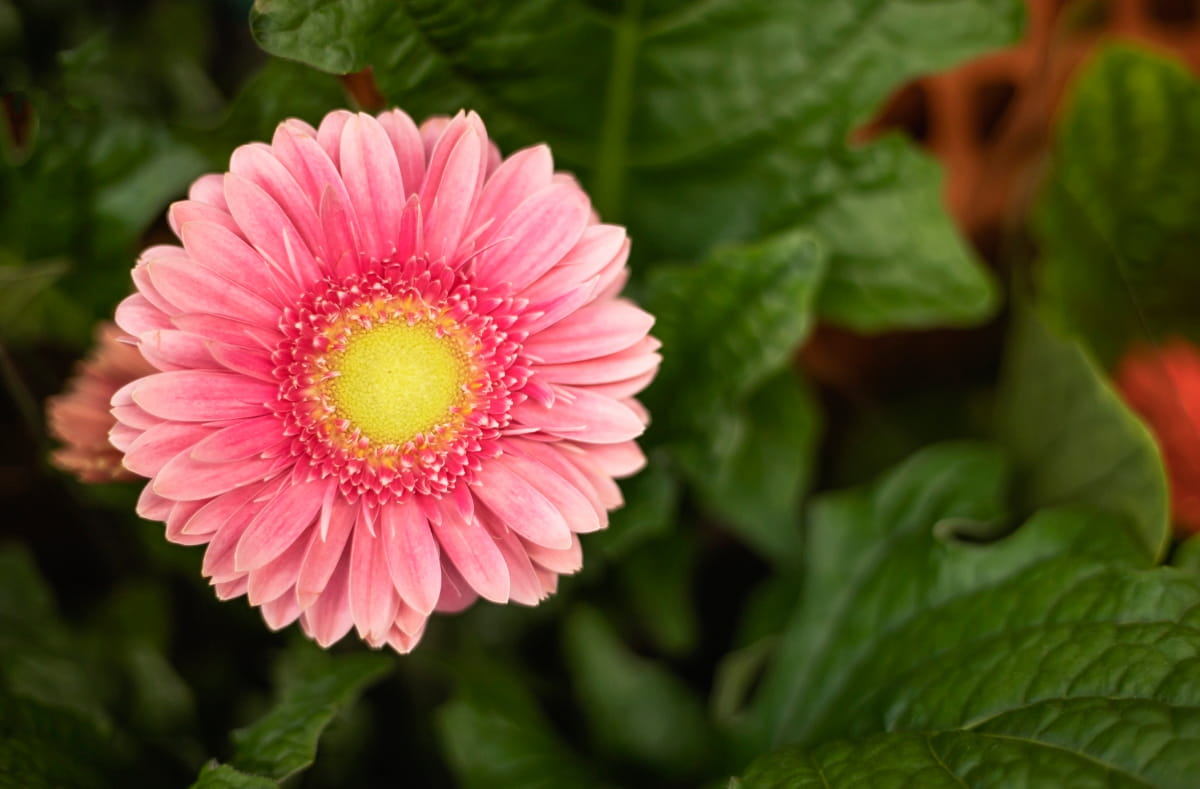Welcome to our blog post on Common Gerbera Plant Pests! Gerberas, with their stunning blooms and various varieties, are beautiful additions to gardens, but like any plant, they can be attacked by a range of common pests that can hinder their beauty and health. This blog post aims to discuss 10 of the most common gerbera pests, including their symptoms, treatments, prevention, and management. So, buckle up to explore these gerbera plants’ ten most common pests.

Important Points for Beginners to Identify and Manage Pests in Gerbera Plants
- Identifying the pest: The first step is identifying the pest infesting your gerbera plant so that you can approach it with the most effective control method.
- Regular Monitoring: Monitor your gerbera plants regularly for signs of pests. This will help you to identify an infestation early when it is easier to control.
- Sanitation: Remove the infected plant debris and burn them.
- Natural Control: Several natural control methods can help to manage pests. These include plant extracts, essential oils, predators, and organic insecticides.
- Chemical Control: If natural controls are ineffective, use insecticides as a last resort, and follow the label instructions and dosage carefully.
10 Common Gerbera Plant Damaging Pests
Aphid Pest in Gerbera Plant
- Damage Symptoms by Myzus Persicae: Aphids feed on the sap from plant tissues, causing stunted plant growth or distorted flowers and buds. Infested leaves show distortion, wilting, curling, and chlorosis. Aphids excrete sticky, sugary honeydew due to their feeding, promoting the growth of black sooty mold.
- Survival and Spread: Aphids prefer moderate temperatures and high humidity of 20-25°C and 60-80% humidity for their growth and development. High humidity facilitates their feeding and reproduction. They prefer actively growing, particularly succulent plant tissues.
- Treatment, Maintenance, and Control Measures: Spray bifenthrin, cypermethrin, deltamethrin, malathion, diazinon, chlorpyrifos, dimethoate, methyl demeton, imidacloprid, acephate, thiamethoxam, clothianidin, and acetamiprid.
Thrips Pest in Gerbera Plant
- Damage Symptoms by Franklinella Occidentalis: Thrips feed on cell contents of gerbera leaves and cause a stippled or speckled appearance called silvering or whitening. The affected areas appear silvery or have a bleached or bronze-like discoloration. The affected plants may show twisting and curling in leaves, scarring on petals, and deformed flowers.
- Survival and Spread: Thrips prefer warm and dry environments of 20-30°C and <60% humidity for survival and reproduction. Dense canopy, poor airflow, and pollen provide hiding places, shelter, and food for thrips, allowing them to multiply and move between plants easily.
- Treatment, Maintenance, and Control Measures: Spray imidacloprid, acetamiprid, thiamethoxam, acephate, malathion, chlorpyrifos, fipronil, bifenthrin, cypermethrin, deltamethrin, spinosad, methoxyfenozide, pyriproxyfen, and diflubenzuron.
Slug Pest in Gerbera Plant
- Damage Symptoms by Deroceras Reticulatum: Slugs feed by scraping and chewing on the leaves, leaving holes in the leaves, giving a ragged appearance. Slugs produce slimy mucus as they move. The affected plants show flower damage, leaf wilting, chlorosis, and stunted growth.
- Survival and Spread: Slugs prefer moderate temperatures and damp climates of 10-20°C for reproduction and survival. They prefer areas with ample organic matter, shade, and dense vegetation, such as decaying leaves or plant debris.
- Treatment, Maintenance, and Control Measures: Spray metaldehyde, methiocarb, iron phosphate, ferric phosphate, copper sulfate, and copper oxychloride.
Leaf Miner Pest in Gerbera Plant
- Damage Symptoms by Liriomyza Trifolii: Leaf miners larvae feed on the inner tissues of the leaves, creating characteristic winding mines or tunnels. These mines appear as pale or whitish serpentine trails. The affected leaves show discoloration, curling, deformation, stunted growth, and premature leaf drop.
- Survival and Spread: Leaf miners prefer warm and humid conditions of 21-32°C and >60% humidity, vegetative growth stage, and succulent leaves. Overcrowding, plant stresses, and nutrient deficiencies provide an ideal environment for leaf miners to feed and reproduce.
- Treatment, Maintenance, and Control Measures: Spray bifenthrin, cypermethrin, malathion, spinosad, dimethoate, abamectin, imidacloprid, acetamiprid, and thiamethoxam.
Red Spider Mite Pest in Gerbera Plant
- Damage Symptoms by Tetranychus Urticae: Red spider mites feed on the leaf chlorophyll, causing yellow or bronze spots. The affected leaves show signs of stippling, webbing, curling, wilting, distortion, and premature leaf drop.
- Survival and Spread: Red Spider Mites prefer warm and dry conditions of 21-32°C for survival and reproduction. Overcrowding, dust on leaves, and poor air circulation provide a conducive environment for the pest.
- Treatment, Maintenance, and Control Measures: Spray abamectin, propargite, bifenazate, spiromesifen, metasystox, dicofol, bifenthrin, cypermethrin, deltamethrin, and dimethoate.
In case you missed it: Common Jasmine Plant Damaging Diseases: Symptoms, Treatment, Prevention, and Management

Leaf Hopper Pest in Gerbera Plant
- Damage Symptoms by Empoasca Fabae: Leaf hoppers excrete honeydew, a sticky substance, as they feed on plant sap, promoting the growth of sooty mold and causing stippling or white speckling. The affected plants may show chlorosis, curling, defoliation, reduced flowering, and stunted growth.
- Survival and Spread: Leaf hoppers prefer warm and moist climates of 20-30°C for survival and reproduction. Weeds, plant debris, monoculture, high plant density, and poor airflow provide a conducive environment for pests.
- Treatment, Maintenance, and Control Measures: Spray bifenthrin, cypermethrin, deltamethrin, imidacloprid, acetamiprid, malathion, chlorpyrifos, carbaryl, dimethoate, methyl parathion, quinalphos, and diflubenzuron.
Caterpillar Pest in Gerbera Plant
- Damage Symptoms by Helicoverpa Armigera: Caterpillars feed voraciously on the foliage, causing severe defoliation. They consume the green tissue between the veins, causing the leaves to appear skeletonized and have a lacy or net-like appearance. They excrete black or dark brown pellets called frass or droppings.
- Survival and Spread: Caterpillars prefer warm and moist environments of 20-30°C for reproduction and survival. Prolonged leaf wetness, weeds, and leafy vegetation create a conducive environment.
- Treatment, Maintenance, and Control Measures: Spray spinosad, bifenthrin, cypermethrin, deltamethrin, imidacloprid, acephate, carbaryl, malathion, acetamiprid, and chlorpyrifos.
Whitefly Pest in Gerbera Plant
- Damage Symptoms by Trialeurodes Vaporariorum: Whiteflies extract sap from the leaves and excrete sticky honeydew that promotes sooty mold. Infested plants exhibit chlorosis, wilting, curling, deformed leaves, and reduced flowering.
- Survival and Spread: Whiteflies prefer warm and mild humid environments of 20-30°C and >60-70% humidity for survival and reproduction. They prefer plants in their vegetative growth stage, as they provide tender new leaves and shoots rich in nutrients.
- Treatment, Maintenance, and Control Measures: Spray bifenthrin, cypermethrin, permethrin, pyriproxyfen, buprofezin, malathion, chlorpyrifos, imidacloprid, acetamiprid, fipronil, diflubenzuron, and thiamethoxam.
Mealybug Pest in Gerbera Plant
- Damage Symptoms by Pseudococcus Longispinus: Mealybugs are covered in a white, cottony wax that serves as a protective shelter, the most noticeable sign of its presence. They feed on the sap and excrete honeydew. Infected leaves show chlorosis, wilting, distorted, and premature leaf drop.
- Survival and Spread: Mealybugs prefer warm and humid environments of 20-30°C and >60% humidity for reproduction and survival. Overcrowding and poor airflow create a conducive environment for the pest.
- Treatment, Maintenance, and Control Measures: Apply imidacloprid, acetamiprid, malathion, chlorpyrifos, bifenthrin, cypermethrin, permethrin, clothianidin, and thiamethoxam.
Mite Pest in Gerbera Plant
- Damage Symptoms by Polyphagotarsonemus Latus: Mites feed on the tender shoots and meristematic tissues. Infected plants show a bushy appearance, webbing, leaf wilting, chlorosis, distortion, stunted growth, necrosis, and flower deformities.
- Survival and Spread: Mites prefer warm and humid environments of 20-30°C and 70-80% humidity for reproduction and survival. Plant debris, plant stresses, overcrowding, excessive moisture, and waterlogged conditions create a conducive environment for the pest.
- Treatment, Maintenance, and Control Measures: Spray abamectin, spiromesifen, bifenazate, fenpyroximate, bifenthrin, cypermethrin, deltamethrin, imidacloprid, clothianidin, malathion, and chlorpyrifos.
In case you missed it: Common Marigold Plant Damaging Pests: Symptoms, Treatment, Prevention, and Management

Conclusion
Common gerbera plant pests include aphids, thrips, slugs, leaf miners, red spider mites, leaf hoppers, caterpillars, whiteflies, mealybugs, and mites. By identifying the pest, inspecting plants regularly, and using natural control methods, you can help to keep your gerbera plants healthy and beautiful.
- Deworming Schedule for Dogs/Puppies: A Beginners Guide
- How to Prevent and Control Parasites in Goats
- Beneficial Insects in Pest Management
- Natural Solutions for Pest Control in Flower Gardens
- Types of Fungicides Used in Agriculture
- Common Issues in the Fruit Development Stage of Pomegranate Farming
- Fruit Development Issues in Papaya: Easy Solutions and Treatment
- Soil-Borne Diseases and How to Protect Your Plants
- Practices to Prevent Disease Spread in the Garden